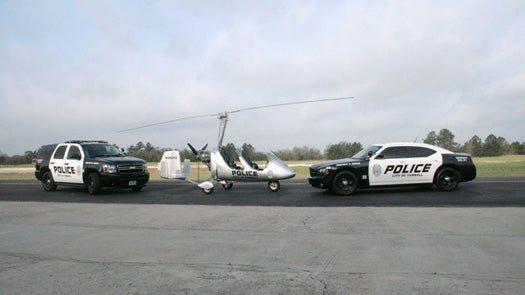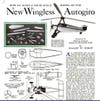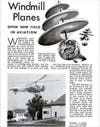Nearly a Century After We Started Drooling Over Them, America Gets Its First Police Auto-Gyro
Today is a day for fulfilling the dreams of PopSci’s past, it would seem. Following the amphibious 70’s-esque camping trailer,...

Today is a day for fulfilling the dreams of PopSci’s past, it would seem. Following the amphibious 70’s-esque camping trailer, Jalopnik takes a whirl in the Auto-Gyro MTOsport, America’s first police gyroplane, stirring up fond memories of all the fancy fliers we dreamed up in the 20s and 30s.
Clickhere to launch a gallery of auto-gyros, gyroplanes, autogiros, or whatever they’re called, from the PopSci archives
The MTOsport is headquartered in Tomball, Texas, and at $75,000 costs a fraction of what a police force would spend on a helicopter. Operating costs are low too, at just $50 an hour, largely because it runs on regular pump gas.
The roofless, doorless contraption uses a rear-mounted propeller for speed, and an unpowered, angled rotor, spinning at 80 to 120 RPM, uses the air pushed into the blades from forward motion to create lift. It needs a little more than a hundred yards to take off, and then climbs into the air at a rate of 13 feet per second, eventually hitting speeds of up to 115 mph. Despite the lack of roof, the auto-gyro is arguably safer than a helicopter because it’s always in autorotation. If power is lost, helicopter pilots have to ease their aircrafts down and hope that autorotation engages. The MTOsport would just glide down gently.
On the downside, no roofs or doors means riding in bad weather will be rough, and without thermal imaging cameras or large light beams, auto-gyros are best flown during the day. Even with these limitations though, the cost and efficiency of the auto-gyro makes it incredibly helpful for police forces in underserved areas like Tomball. The MTOsport can be in the air and on a mission within 10 minutes, and, in terms of coverage, is equal to the deployment of 20 officers, according to Tomball’s chief of police.

The Cross-Channel Flight of the Autogiro, December 1928

Double Gyroplane, August 1934

Build Your Own Model Autogiro, August 1935

Congress’s “Whirligig” Grant, February 1939

Gyroplane Design is a College Course, November 1939